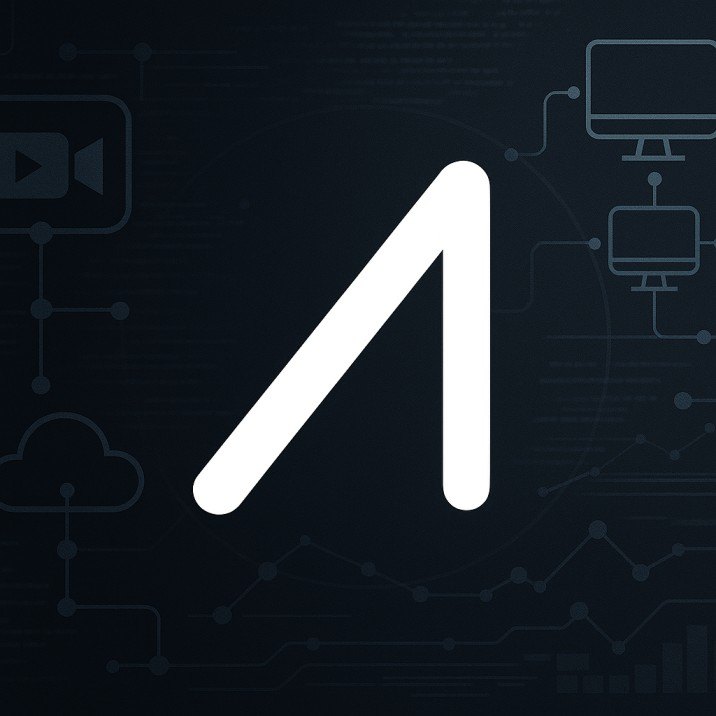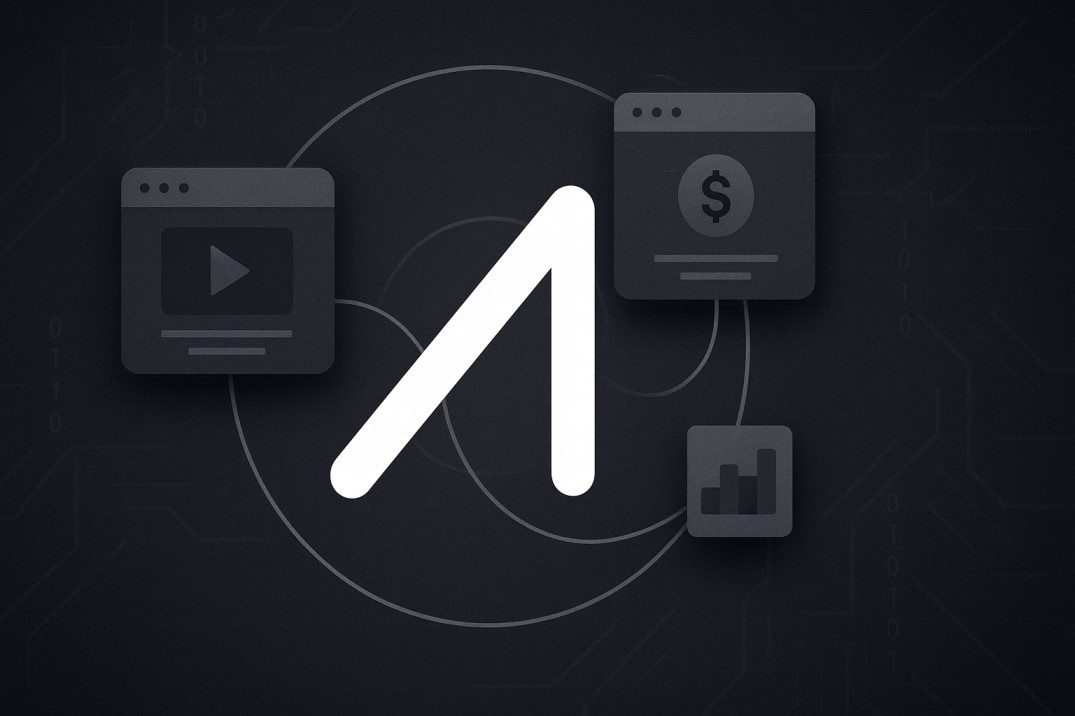TL;DR
- AIOZ Network is a decentralized content delivery network (dCDN) that leverages blockchain and distributed nodes to stream and deliver media efficiently.
- It aims to replace traditional centralized CDNs by reducing costs, improving scalability, and rewarding users for contributing bandwidth and storage.
- Built with Web3 and AI integration, AIOZ supports video streaming, gaming, and metaverse applications.
- The network runs on AIOZ Chain, its own blockchain, ensuring fast transactions and compatibility with Ethereum and Cosmos ecosystems.
- Node operators earn rewards in $AIOZ tokens for contributing resources, creating a self-sustaining ecosystem.
- Partnerships with major streaming and Web3 platforms highlight its growing adoption and real-world utility.
- The vision is to build the backbone for decentralized media distribution, reducing reliance on Big Tech infrastructure.
The internet is evolving at an unprecedented pace. From cloud storage to live video streaming, and now decentralized artificial intelligence, the demand for scalable, secure, and cost-effective infrastructure has never been higher. Traditional Web2 systems-dominated by a few centralized providers-are struggling under this pressure. They are expensive, prone to single points of failure, and often compromise user sovereignty.
This is where AIOZ Network comes in. Positioned as a comprehensive Web3 infrastructure platform, AIOZ is building decentralized solutions for storage, media streaming, and AI computation-all powered by its blockchain and peer-to-peer node system. By combining the best of Ethereum (EVM compatibility) and Cosmos (IBC interoperability), AIOZ is carving out a space as one of the most versatile and forward-looking decentralized infrastructure projects in the blockchain ecosystem.
In this article, we'll dive deep into the AIOZ Network, explore its blockchain architecture, decentralized storage solutions, AI services, streaming innovations, tokenomics, and what challenges it must overcome to fulfill its ambitious vision.
AIOZ Blockchain: EVM Meets Cosmos
At the heart of the network is the AIOZ Blockchain, a Layer-1 built with the Tendermint Core and secured through delegated Proof of Stake (dPoS). What makes it unique is its dual compatibility:
- EVM-compatible - Developers can seamlessly port Ethereum-based applications and write smart contracts in Solidity.
- Cosmos-native - Using IBC (Inter-Blockchain Communication), AIOZ connects with the growing Cosmos ecosystem.
This hybrid approach delivers:
- Instant Finality: Transactions settle immediately, avoiding the latency of traditional blockchains.
- Low Fees: Ideal for dApps and developers frustrated by high Ethereum gas costs.
- Scalability: Infinite horizontal scalability thanks to its multi-chain architecture.
- Cross-chain liquidity: Through Gravity Bridge, assets can move trustlessly between Ethereum and Cosmos.
This combination makes AIOZ a versatile environment where developers can enjoy Ethereum's familiar tooling while accessing Cosmos's fast-growing interoperable ecosystem.
AIOZ DePIN: Decentralized Physical Infrastructure Network

Perhaps the most groundbreaking part of the project is AIOZ DePIN, which reimagines how infrastructure like storage and content delivery is deployed. Instead of relying on centralized servers, AIOZ uses a peer-to-peer (P2P) model, where anyone can contribute spare bandwidth, storage, or computing power. Contributors are rewarded with $AIOZ tokens for their participation.
Key benefits include:
- Infinite scalability through distributed nodes.
- Lower costs than traditional content delivery networks (CDNs).
- Enhanced privacy and security via encryption and decentralization.
- AI-powered optimization for caching, routing, and video compression.
- Resilience against downtime since no single entity controls the network.
By turning everyday devices into part of its infrastructure, AIOZ is creating a global, community-powered CDN that could rival the efficiency of Web2 giants while staying true to Web3 principles.
AIOZ Web3 Services (AW3S)

AIOZ is building full-stack Web3 infrastructure services.
AIOZ Storage
A decentralized alternative to cloud storage providers like AWS S3, offering:
- S3 compatibility for easy integration.
- No single point of failure thanks to distributed nodes.
- High-speed access rivaling centralized systems.
- Pay-as-you-go pricing in AIOZ tokens.
- Built-in CDN for fast delivery.
This is particularly valuable for media companies, dApp developers, healthcare institutions, e-commerce platforms, and startups needing secure, scalable, and affordable storage.
AIOZ Pin (Web3 IPFS Storage)
While IPFS is revolutionary, it has issues like latency and poor persistence. AIOZ Pin solves these with:
- Unlimited pinning.
- Built-in CDN for faster delivery.
- NFT support and dedicated gateways.
- Developer-friendly APIs.
This turns IPFS into a truly production-ready tool for NFT platforms, metaverse applications, and content-heavy Web3 projects.
AIOZ AI
The AI layer is where AIOZ sets itself apart. It provides decentralized AI computing, where tasks can run directly on nodes, protecting data privacy while reducing costs.
Features include:
- Local AI execution for minimal latency.
- Decentralized AI model marketplace for developers and researchers.
- Proof-of-computing incentives for nodes contributing to AI tasks.
- Zero data exposure ensuring maximum privacy.
Use cases range from edge AI for IoT devices to healthcare diagnostics, personalized e-learning, and decentralized AI-powered dApps.
AIOZ Stream
With video streaming projected to reach over $550 billion by 2032, AIOZ Stream is tackling the inefficiencies of centralized platforms.
It provides:
- Infrastructure for video hosting, transcoding, and analytics.
- Global CDN delivery via DePIN nodes.
- Cost-effective solutions for OTT providers, gaming platforms, education apps, and enterprises.
This could disrupt the dominance of Web2 video giants by ensuring creators and platforms have greater control, transparency, and fairer economics.
AIOZ Tokenomics
The $AIOZ token fuels the ecosystem. It is used for:
- Transaction fees on the blockchain.
- Staking and governance in the dPoS system.
- Payments for storage, streaming, and AI services.
- Incentives for DePIN node operators.
Tokenomics aligns incentives between users, developers, and infrastructure providers, making $AIOZ the lifeblood of the network.
Challenges and Risks
Despite its promise, AIOZ faces real challenges:
- Adoption Curve: Convincing enterprises and developers to migrate from centralized incumbents like AWS, Google Cloud, and YouTube.
- Technical Reliability: Maintaining consistent performance across a decentralized, community-driven infrastructure.
- Competition: Facing other DePIN projects (like Filecoin, Arweave, Livepeer) while needing to differentiate itself.
- Token Volatility: As with all crypto ecosystems, token fluctuations could affect incentives for node operators and developers.
Addressing these will be crucial for long-term sustainability.
Roadmap and Future Outlook
According to the AIOZ Network Docs, upcoming priorities include:
- Expanded interoperability with more EVM and Cosmos chains.
- Scaling DePIN participation to millions of nodes.
- Launch of additional native dApps to showcase infrastructure utility.
- Broader enterprise partnerships across media, gaming, and healthcare.
If AIOZ can execute on this vision, it has the potential to become the decentralized infrastructure backbone for Web3 applications, spanning storage, AI, and streaming.
Final Thoughts
The AIOZ Network is more than a blockchain-it's a full ecosystem for decentralized infrastructure, offering practical solutions to problems facing storage, AI computation, and streaming. By blending EVM and Cosmos interoperability with community-powered DePIN nodes, it creates a platform that is scalable, secure, and inclusive. The digital economy of tomorrow will demand infrastructure that is not only efficient but also decentralized and user-owned. AIOZ is betting that the future won't be built in centralized data centers-but on the devices and contributions of millions of people worldwide.
If it succeeds, AIOZ could stand as one of the foundational networks powering the Web3 internet, shifting control from corporations to communities, and from silos to open ecosystems.











